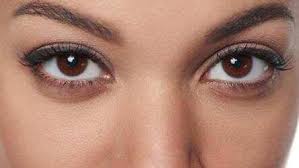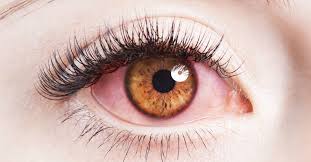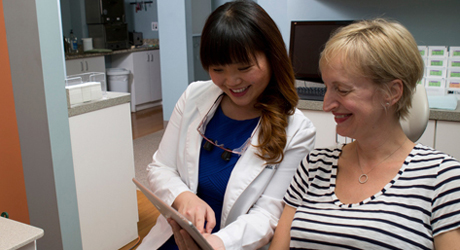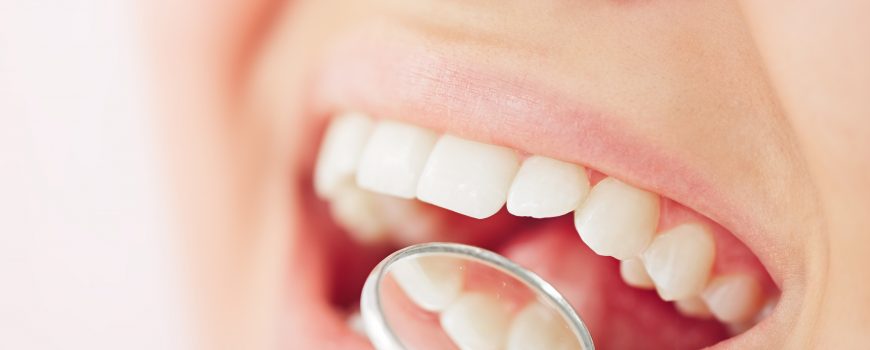Most Common Eye Problems – Signs, Symptoms and Treatment Options
Diabetic Retinopathy
Diabetic retinopathy is basically a diabetes complication, which affects eyes by causing damage to the blood vessels spread throughout the light sensitive tissues of the retina (the back of the eye).
Anyone having type 1 or type 2 diabetes can develop this eye condition, especially those who have diabetes for a long time with fluctuating blood sugar levels. Usually, both eyes get affected by diabetic retinopathy.
Signs and Symptoms of Diabetic Retinopathy
There might not be any noticeable symptoms through the early stages of this eye condition. When it progresses to later stages, following symptoms might appear eventually:
- Dark spots or strings floating through your vision (floaters)
- Impaired color recognition
- Fluctuating vision
- Blurred vision
- Vision loss
Treatment Options
There is no reliable way to cure retinopathy once it has progressed to advanced stages. However, photocoagulation (laser treatment for retinopathy) comes really handy in preventing vision loss if chosen before retina being severely damaged.
Another treatment option for diabetic retinopathy in its earlier stages is vitrectomy, a process through which vitreous gel is surgically removed while retina has not been severely damaged.

Dry Eyes Syndrome
One of the functions of tears is to keep your eyes lubricated, and when they fail to provide adequate lubrication for the eyes, you are being affected by dry eye syndrome. From your body being unable to produce enough tears to production of low quality tears, there can be a host of reasons behind inadequate lubrication for your eyes.
You can experience stinging or burning sensation when you have dry eyes, which can be experienced under certain situations, such as in an air-conditioned room, while traveling on an airplane or looking at a computer screen for a long time without any breaks.
Signs and Symptoms of Dry Eyes Syndrome
- A burning, scratchy or stinging sensation in eyes
- Eye redness
- Sensitivity to light
- Mucus production in or around the eyes
- Blurred vision
- Eye fatigue
- Issues in wearing contact lenses
Treatment Options
Different treatment options can be used for dry eyes syndrome depending upon the reason behind the eye problem. Some most commonly used treatment options include:
- OTC (Over-the-counter) topical medications: These can be used when your dry eyes syndrome is mild in nature. Artificial tears, gels and ointments can be some of the commonly used OTC medications to treat mild dry eyes.
- Prescription Medications: FDA approves only ‘Lifitegrast’ and ‘Cyclosporine’ as prescription dry eye medications. To deal with eye inflammation, ‘Corticosteroid’ eye drops may also be prescribed as short-term treatment.
- Devices: There are also some FDA-approve devices that serve to temporarily relieve you from dry eyes by stimulation of nerves and glands responsible for tear production.
- Surgical Options: Your eye care professional may resort to insertion of silicone-based punctal plugs to partially or completely plug tear ducts through the inner corners of your eyes to ensure tears aren’t draining from the eye.
- Lifestyle Changes: Lifestyle based enhancements also prove helpful in dealing with dry eyes syndrome. Taking periodic breaks or cutting your screen exposure can be really helpful. Avoiding warmer temperatures also helps in doing so.
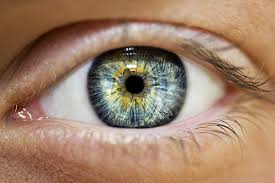
What Is Photodynamic Therapy For Age-Related Macular Degeneration?
Photodynamic therapy is a treatment for the eyes. It uses a laser and a special medicine that works when exposed to a certain type of light. It is done to treat age-related macular degeneration (AMD). AMD is a condition that can lead to loss of vision.
The retina is the layer of cells in the back of your eye that converts light into electrical signals. Your retina then sends these signals to your brain. AMD affects your macula. The macula is the sensitive, central part of your retina. This area is responsible for your detailed, central vision. AMD damages your macula. The macula may become thinner as a result. Blood vessels may start growing beneath your retina. This can cause fluid to leak beneath your macula. This excess fluid can lead to vision loss.
Just before the procedure, an eye doctor injects a medicine into a vein in your arm. This medicine is sensitive to light. It collects in the abnormal blood vessels under your macula. You are then given an anesthetic eye drop. Using a special contact lens, the eye doctor then shines a laser into your eye. The light from the laser activates the medicine. The medicine then creates blood clots in your abnormal blood vessels. This seals off the vessels. This can help prevent more vision loss.
Why might I need photodynamic therapy for age-related macular degeneration?
Photodynamic therapy is one type of treatment for AMD. AMD is a common cause of significant loss of eyesight in older adults. Rarely, it can lead to total blindness. Because it affects your macula, you may still have your side (peripheral) vision if you have AMD. It may cause a sudden or gradual loss of your central vision.
AMD comes in two main subtypes: dry type and wet type. Abnormal blood vessel growth is present in only the wet type. Photodynamic therapy is recommended only as a possible therapy for the wet type of the disease.
Photodynamic therapy can’t restore vision that you have already lost. But it may slow down the damage to your central vision.
Photodynamic therapy is an option only for certain people with wet type AMD. It may be advised if your vision loss comes on slowly over time, instead of suddenly. The treatment is used less often now that there are new drugs to decrease abnormal blood vessel growth. But your healthcare provider may advise the therapy in addition to these new drugs.
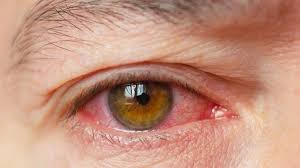
Inflammation of the eye
When the eyes are inflamed, they become red, swollen and can water. Frequently, the eyelids stick together.
Impaired vision can encourage the development of dry eyes.
Inflammation of the eye often results from an infection by viruses or bacteria. But inflammation of the eye can also be nonspecific. Different clinical pictures are distinguished depending on which parts of the eye are affected. It is advisable to visit your eye doctor because inflammation of the eye can also progress to a severe form.
Symptoms of eye inflammation
When an eye is inflamed, it entails an inflammatory process around the eye. It can affect different parts of the eye. The term “inflammation of the eye” serves as an umbrella term for the various inflammatory diseases. Different symptoms and complaints are prevalent depending on the clinical picture. In rare cases, there can be a serious disease present which is a threat to the eyesight.
Most commonly, inflammation affects the conjunctiva, followed by the cornea and the eyelid.
Many symptoms of eye inflammation overlap with those of dry eyes. These include:
- Redness
- Itching
- Burning
- Foreign body sensation
- Watery eyes
- Swelling
On top of that other, more specific symptoms can occur:
- Pain
- Eyelids sticking together
- Clouding of vision
- Sensitivity to light
- Secretion of pus
A purulent discharge is a sign of bacterial infection. Some people affected suffer from severe pain and a significant reduction in vision.
Causes of eye inflammation
Eye inflammation can be traced back to numerous different causes. Infections due to bacteria, viruses or fungi are the main causes. The eyes are one of the ports of entry for pathogens in the human body. They put up a fight against the “invaders” on a daily basis, but when there is inflammation, the germs have outsmarted the immune defence system.
Dry eyes are particularly susceptible to eye inflammation. The eye’s immune system has only a limited effect when the tear film is impaired. In such conditions, pathogens can gain access more easily and cause inflammation. Dry eyes can be cared for with lubricating eye drops which can also help to reinforce the protective barrier against germs.
Further reasons for eye inflammation are allergic reactions such as hay fever, autoimmune diseases and environmental irritants such as draughts, dust particles or sunshine. Mechanical irritants, like when an eyelash grows into the eye, can also result in inflammation of the eye.
Conjunctivitis (Pinkeye)
Conjunctivitis, also known to many as pinkeye is a condition that inflames the tissues lining the back of your eyelids and covering your sclera (conjunctiva). As a result of this, your eyes can turn itchy, red, blurry, teary and discharging, sometimes also giving you a feeling that something is in your eyes. It is also one of the most commonly prevailing eye problems.
Though it is highly contagious (readily affecting children), but rarely serious, quite unlikely to damage your vision, more so when identified and treated early.
Types of Conjunctivitis
Conjunctivitis is categorized into three main types:
- Allergic Conjunctivitis
- Allergic Conjunctivitis: Mostly affects people already suffering from seasonal allergies, when they contact with something that triggers an allergic reaction within their eyes.
- Giant Papillary Conjunctivitis: Caused due to long term presence of a foreign body in an eye, affecting people wearing hard or rigid contact lenses or the soft ones not being replaced frequently.
- Infectious Conjunctivitis
- Bacterial Conjunctivitis: This is the type of eye infection caused mostly by streptococcal or staphylococcal bacteria that’s transferred to your eyes via your own respiratory system or skin.
- Viral Conjunctivitis: Contagious viruses thriving in common cold are mostly responsible for spread of this type of conjunctivitis, thus affecting people by exposure to the sneezing or coughing of someone suffering from an upper respiratory tract infection.
- Ophthalmia Neonatorum: One of the most severe forms of bacterial conjunctivitis specifically affecting newborn babies, also capable of causing permanent eye damage if not treated immediately.
- Chemical Conjunctivitis
This spreads as a result of exposure to noxious chemicals, chlorine in swimming pools or even air pollution.
Signs and Symptoms of Conjunctivitis
- Redness appearing in the eyelid or through the white of the eye
- Swelling in the conjunctiva
- Excessive tearing
- Thick yellowish discharge, mostly covering whole eyelashes, especially after sleep
- Itching and burning eyes
- Blurred vision
- Extra sensitivity to light
Treatment Options
Appropriate treatment options for conjunctivitis vary depending upon the cause of this eye condition.
- Allergic Conjunctivitis: It must start with avoiding exposure to the irritant(s). Artificial tears and cool compresses suffice in case of mild intensity of the disease. Antihistamines or non-steroidal anti-inflammatory drugs may be prescribed in case of severe allergic conjunctivitis. And for people with persistent allergic conjunctivitis, topical steroid eye drops may be the appropriate option.
- Bacterial Conjunctivitis: Antibiotic eye drops or ointments work well for this type of conjunctivitis, mostly requiring 3 to 4 days of treatment for reasonable recovery. However, it’s highly recommended that patients complete the entire course of antibiotics to totally avoid recurrence.
- Viral Conjunctivitis: Viral conjunctivitis cannot be treated with drops, ointments or some antibiotics until the virus runs its course like common cold. This may take up to about 2-3 weeks.
- Chemical Conjunctivitis: The standard treatment for chemical conjunctivitis includes thorough flushing of the eyes using saline water. In some cases, people might need to go for topical steroids.
